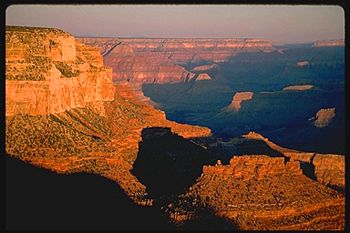|
|
Grand Canyon National ParkIntroduction The Grand Canyon National Park is a park known around the world, preserving 1.2 million acres of land. It is the home to a major portion of the Colorado River, as well as vast pine forests, 1,500 different plant species, 90 different types of mammals and 290 distinct types of birds. The park was first set aside in 1908 as a national monument, before being designated a national park in 1919.

The Grand Canyon is considered by many to be one of the Seven Wonders of the World, very awe inspiring and seemingly impermeable to impacts of the park visitors. In fact, the Grand Canyon’s conservation has been threatened by the increased human demands on the park’s natural resources. There have been a number of elements that have been deemed the most compromising to the park’s future. The first thing is the major increases in population growth in the region which has led to new pressure on the land and water reserves, leading to habitat fragmentation and groundwater exhaustion. Past management practices have also been blamed, including problems from forest management, dam building and grazing. Another major issue is the problem of tourism and the recreation-dependent economy in which we live. Being one of the world’s most-visited national parks, the Grand Canyon is not surprisingly under extreme internal and external pressures. Major problems that we will attempt to deal with include overcrowding, air pollution, vehicle congestion, air tour overflights, stresses on nature, forest degradation, and adjacent development. |